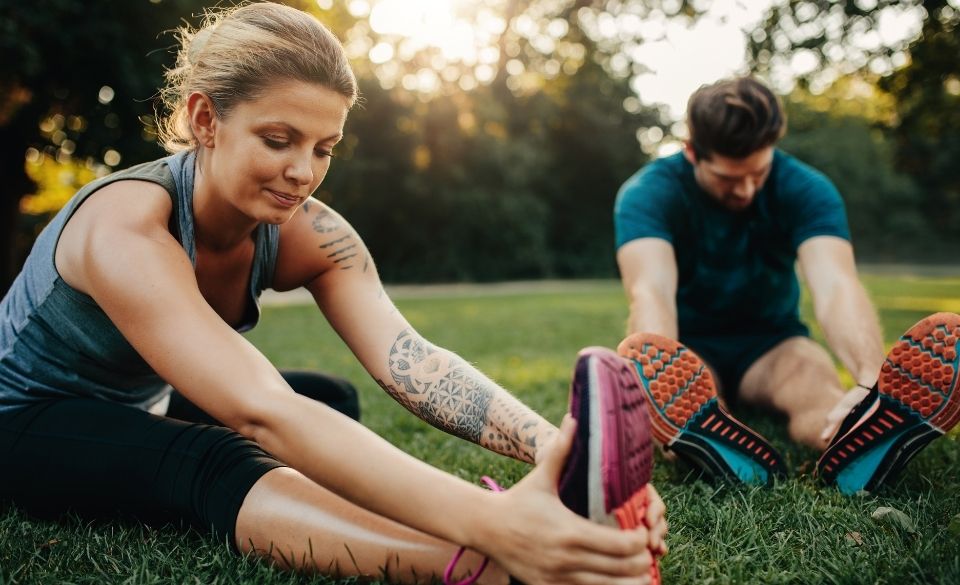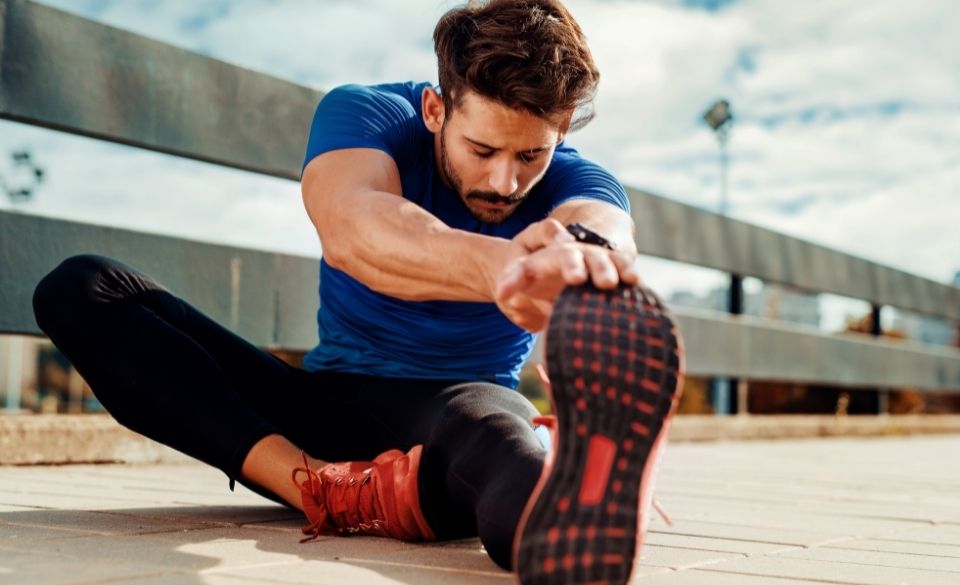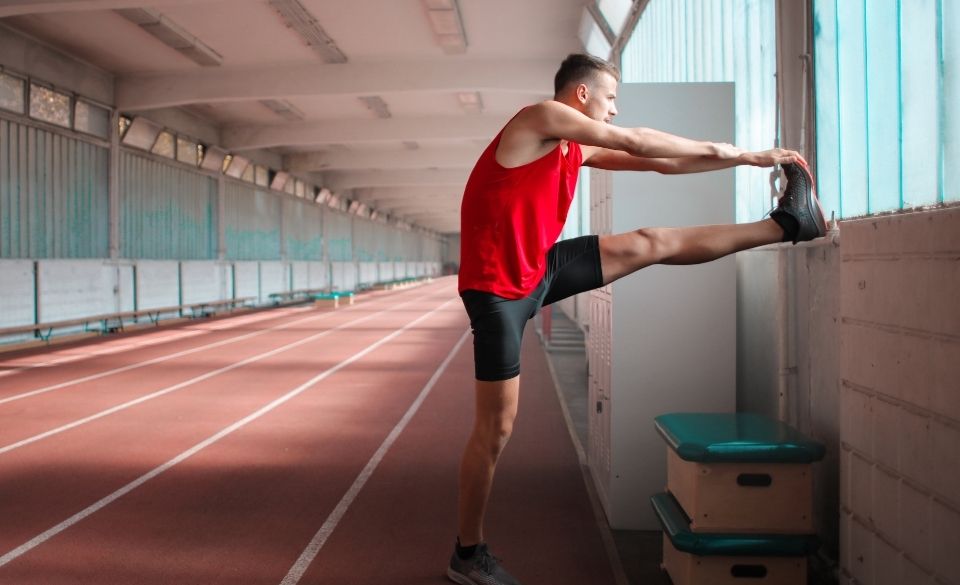
Static Stretching Benefits & Examples – UPDATED 2022
Page Contents
Stretching is important for all types of runners, cyclists, triathletes and many other endurance sports. However it is important to understand the different types and how to apply them. Stretching helps to prevent injuries, and it can boost your performance.
But, do you know the different types of stretches? Static stretches are one of the most important for runners and athletes alike. Let’s take a look at the key static stretching benefits and go through the essential examples.
What is Static Stretching?
Static stretching is a type of stretch where the aim is to move a muscle as far as it will go without feeling pain. The position is held for around 15-30 seconds, and the stretch is repeated 3-5 times. Usually, static stretching is done as a cool-down routine, but it can be used as a wider stretching routine based on your goals. This form of stretching is very safe for beginners and those that may not have a lot of physical activity under their belt. The most important thing to note about static stretching is that there is no movement involved in the stretch.
Remember to start slowly, be gentle, and don’t stretch past your comfort levels. You should also remember to breathe deeply while holding the stretch.

Static Stretching Examples & Exercises For Athletes
Let’s take a look at the essential static stretching examples that you need to know.
Hamstring stretch
The hamstrings are a vital muscle for running. In this stretch, you stand up and bend your knee. The other leg should be out in front of you. You will then need to point your toe upwards and keep your body forward. Keep your posture straight and put your hands on the bent knee. Hold the position for 20-30 seconds and repeat.
Kneeling quad stretch
The quads are also used heavily in running. In this stretch, you will need to kneel on one foot and then push your hips forward. You can hold on to something for balance.
Achilles stretch
This stretch begins with standing up and putting the ball of one foot onto a raised step and then bending your knee and leaning forward with your body.
Seated butterfly stretch
This next stretch targets your thighs, hips, and lower back. First, you should sit on the floor and engage your abs. Then you put the soles of your feet together and allow your knees to bend to the side. Put your hands on your feet and pull your heels toward you. Hold this stretch for 15 to 30 seconds and take a deep breath in.
Cobra pose
If you want less tightness in your abs and chest, then this is the stretch for you. Firstly, lie on your stomach and put your hands under your shoulders. Then press into your hands and squeeze your elbows whilst lifting your head. Make sure your elbows are bent, and hold the position for 20-40 seconds.
Top Static Stretching Benefits For Runners, Cyclists & Triathletes
Whether you’re a runner, cyclist, or triathlete, there are many benefits that you can attain from static stretching. The top benefits include:
Increase flexibility
Flexibility is vital for athletes, and especially for runners. Static stretching gives you a boost in flexibility and helps to improve your range of motion. This helps athletes to improve their performance, reduces the chances of injury, and means movements can be performed more efficiently. Stretching helps to support muscle growth. You can expect greater stability, and you may find it easier to implement the correct form.
Reduction in pain
Static stretching is also helpful for reducing pain and stiffness in joints. It helps reduce tightness in muscles, which means you experience less pain. This frees up movement and reduces the load on your joints.
Reduction in anxiety and stress
There are also mental benefits of static stretching. High levels of stress can tighten muscles and reduce performance. Stretching helps calm your mind and this, in turn, helps to calm your muscles which means you can expect optimum performance.
Enhanced athletic performance
One of the main benefits is getting better performance from your muscles. You can expect greater agility, speed, and strength. This is vital for runners, cyclists, and triathletes since it allows them to perform at the highest level.

Dynamic Stretching vs Static Stretching – What is the Difference?
There are a variety of stretching types out there, but the main ones are dynamic stretching and static stretching. It can be a bit difficult to understand the main differences between the two. Both have their uses, and athletes can make use of both types of stretches to achieve their goals. It is key to understand that both types can help prepare your body for physical activity as well as helping your body recover. The main difference is when you complete them and the type of movement involved.
As we mentioned earlier in the article, static stretching is where you hold a movement for around 15 to 30 seconds whilst extending past your comfort zone. The stretch can then be repeated multiple times. Static stretches can help to improve mobility and flexibility. The stretch should not be too challenging, and the aim is to naturally relax the muscle so that it stretches on its own. There should be no pain involved when static stretching. There are two main types of static stretching. In the active form, more pressure is applied for greater intensity. In the passive form, this force is applied externally.
The key difference between dynamic stretching vs static stretching is that dynamic has active movement. Dynamic stretching involves continuous movement that closely replicates the movement of the exercise that will be performed. This helps to increase flexibility for that specific activity. Usually, static stretching is used for cool-downs, whereas dynamic stretching is used to warm up. Take a look at the best dynamic stretching examples in our previous article.
Closing Thoughts
You will now have a clearer idea of the benefits of static stretching and know more about various static stretching examples. By going through these examples, you will be able to improve your flexibility for running and reduce the chance of injuries. Let’s make 2022 the year of stretching!




